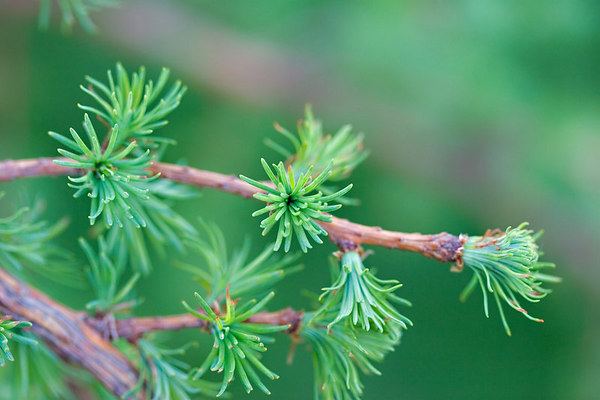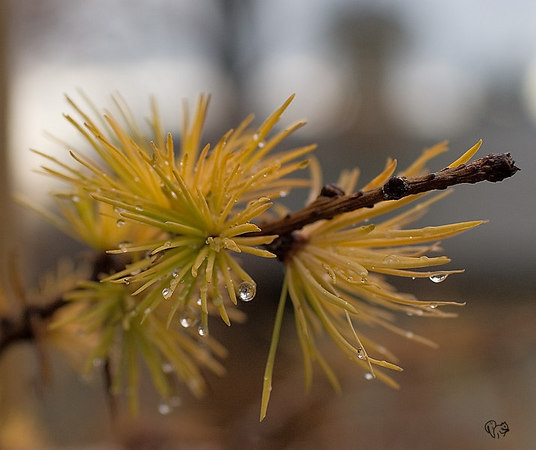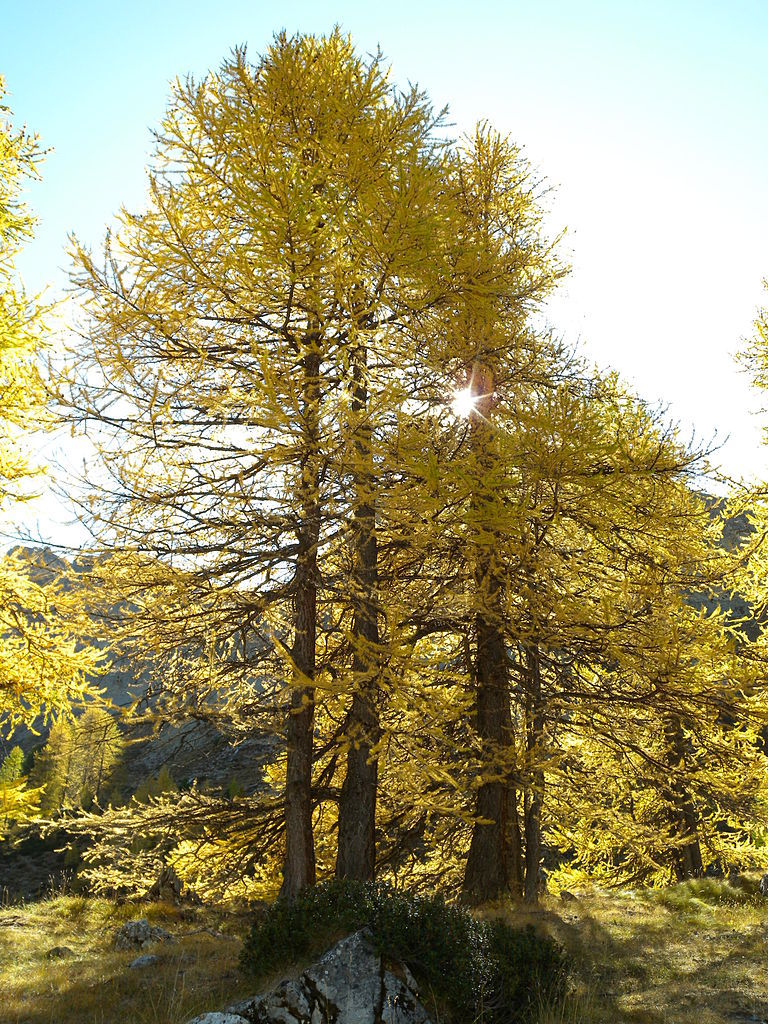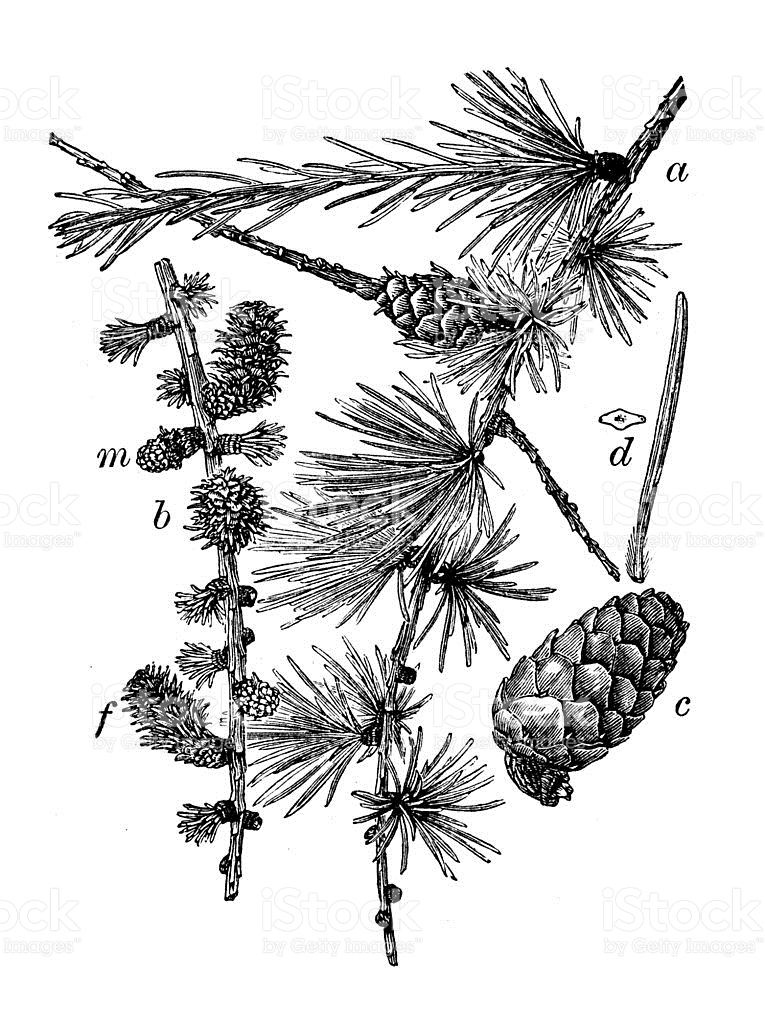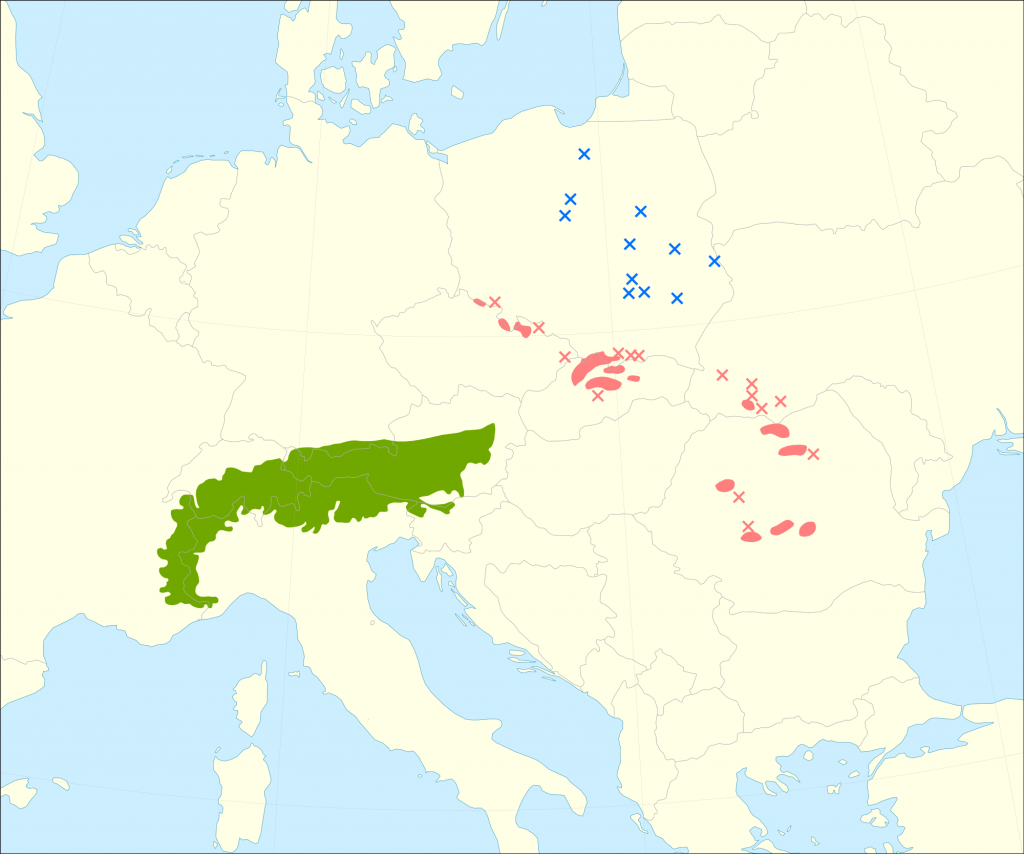Larix decidua, as described in 1768 by Philip Miller (1691-1771), is commonly known as European larch as well as Mélèze d'Europe in the French language; as larice comune in Italian; Gemeine Lärche, or Europäische Lärche in German; as Modín opadavý in Czech; as Smrekovec opadavý in Slovakian; as Modrzew europejski in Polish; and as МодÑ'ина євÑ'опейÑька in Ukrainian. It was originally called Pinus decidua ("the deciduous pine") when many genera were lumped loosely as variations with in Pinus. (In New Zealand, L. decidua is classed as a "wilding conifer," an invasive species which spreads into the high country; it was planted by the New Zealand Forest Service for erosion control.)
There are three recognized specific varieties, distinguished primarily by differences in seed cones:

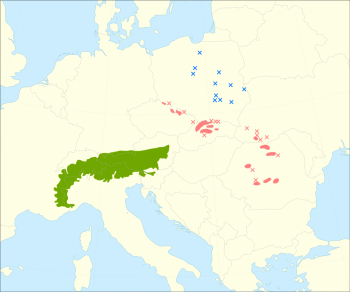
Description. European larch is a medium-size to large deciduous coniferous tree reaching 75 to 135 feet (25 - 45 m) tall, with a trunk up to 3 feet (1 m) in diameter measured at breast height. Exceptional specimens grow to 165 feet (55 m) tall and 6 feet (2 m) in diameter.
Distribution. This species is native to the mountains of central Europe, in the Alps and Carpathian Mountains, with disjunct lowland populations in northern Poland and southern Lithuania. It is cultivated as an ornamental tree for planting in gardens and parks. It is very cold tolerant, able to survive winter temperatures down to at least -58ºF (-50°C), and is among the tree line trees in the Alps, reaching 7,000 feet (2,400 m) in elevation above sea level, though most abundant between 3,000 and 6,000 feet (1,000 - 2,000 m). It only grows on well-drained soils, avoiding waterlogged ground.
The wood is tough and durable, but also flexible in thin strips, and is particularly valued for yacht building; wood used for this must be free of knots, and can only be obtained from old trees that were pruned when young to remove side branches.
